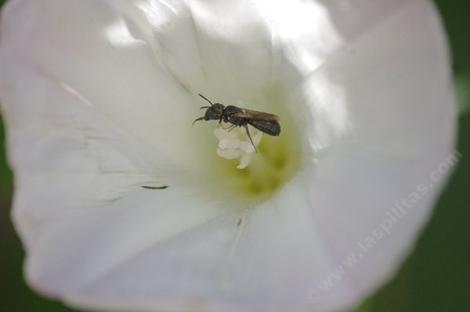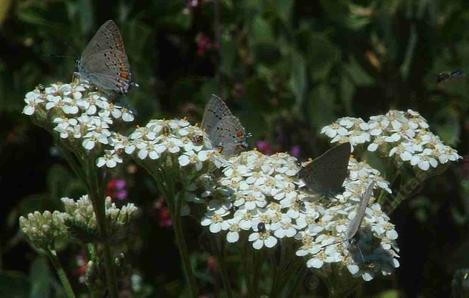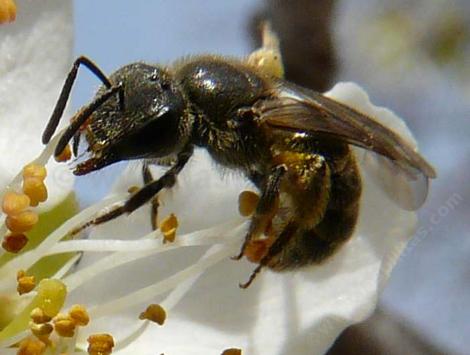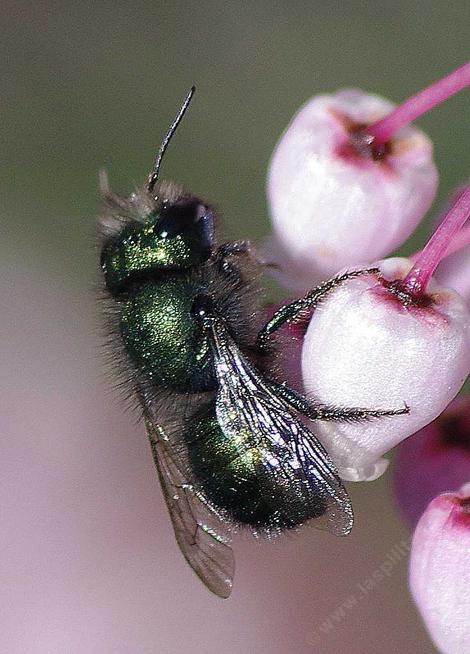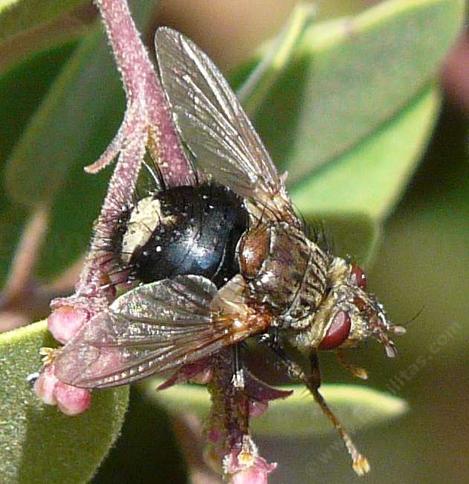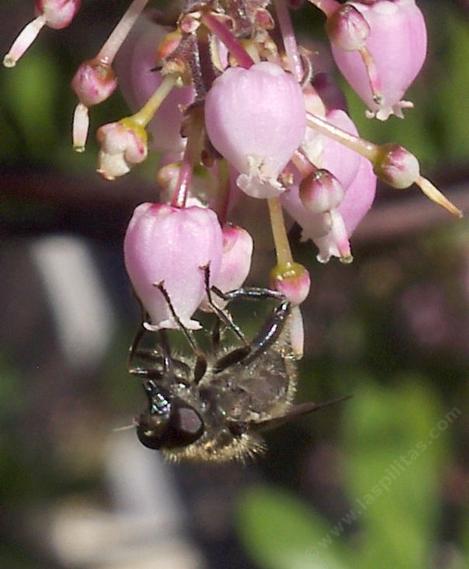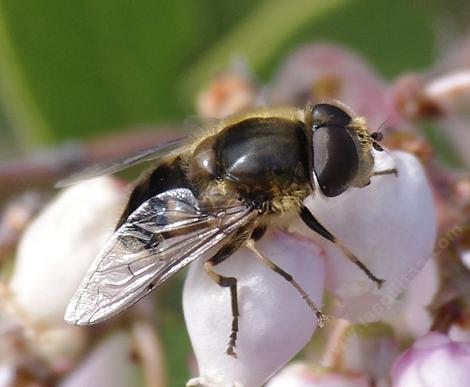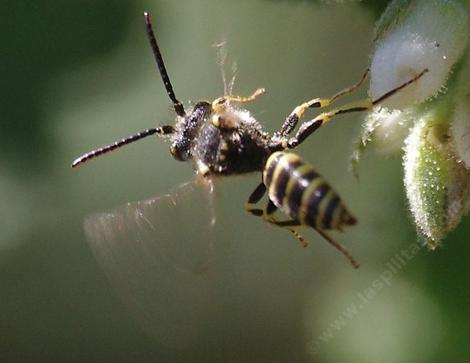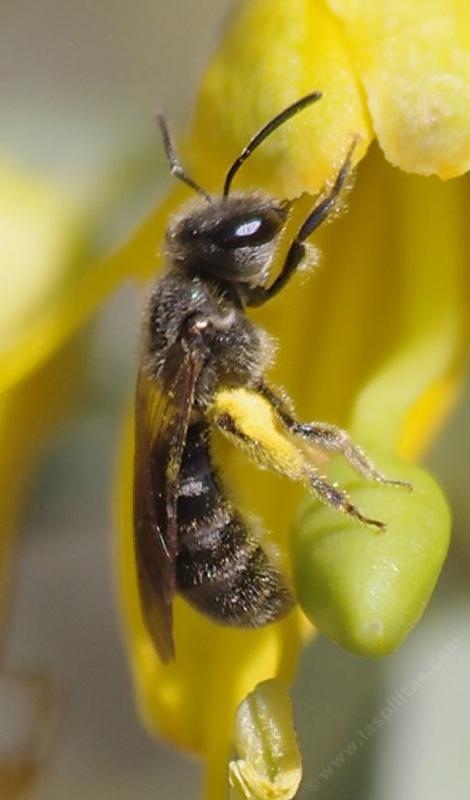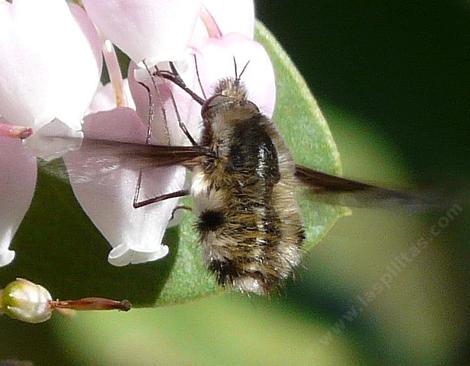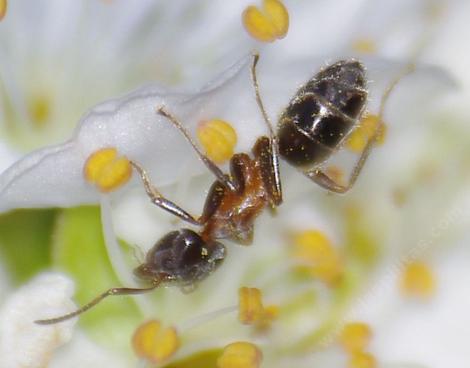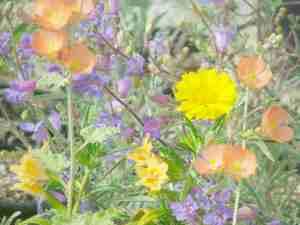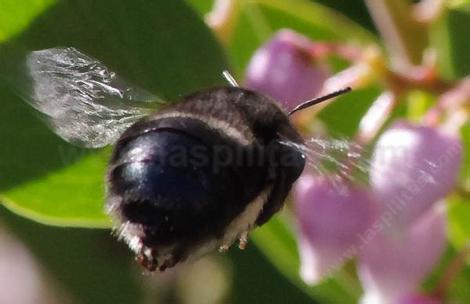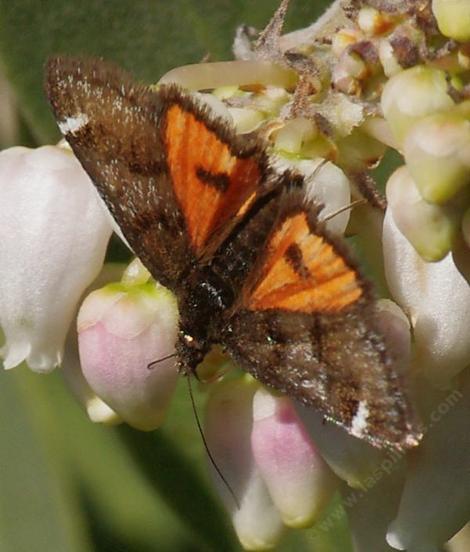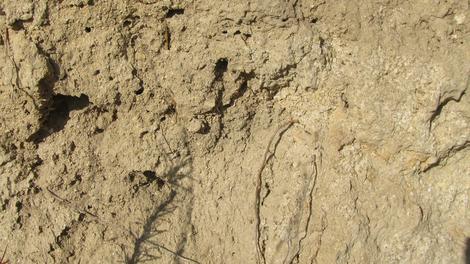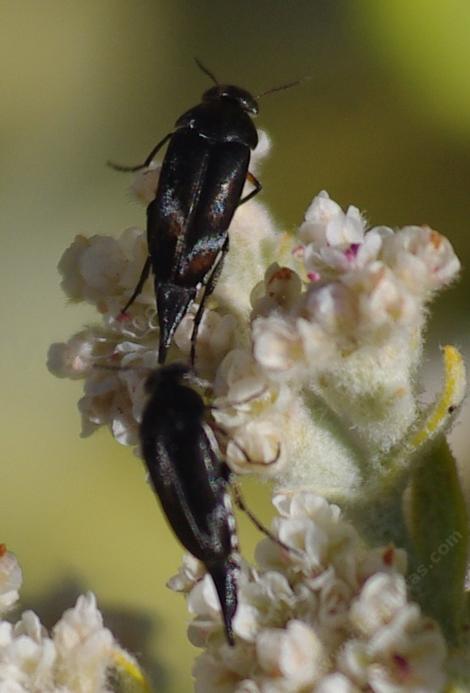California Native Insect Pollinators
Creating a Pollinator Habitat
This is only a partial list and it's not in any order as we keep adding to it.
We're developing a list of insects that pollinate
native plants and non-native fruit crops. Native insects were
found to
be 100 times more efficient than honeybees as
pollinators
in an almond orchard. Creating habitat for native bees does
not
have to be a big deal. They require limited use of
insecticides,
weed- free, uncultivated ground, areas of mulch, a few old logs, and
some
native bushes.
Most of the native insects only live for a couple of
months, but because of the many numbers of different species, a variety
of plants need to be grown that will provide pollen and nectar
throughout the year. Within the field, planted as a hedge
row
every 100-200 meters (one or two football fields), at the
field edges and
corners should be enough to complement the honeybees' pollination services.
In a garden situation, planting the native pollinator habitat
around the edges of the vegetable or fruit garden seems to work best.
The
predatory flies also use the nectar and pollen of the flowering
bushes to
sustain
them. Increasing the predators
should reduce the need for the use of
insecticides.
So, if you can maintain native flowers all year that should provide the maximum pollinators, predators, and parasites for the ecosystem and your crop. This would seem to be a natural solution anywhere in the world. Use native plants from your regional area, to attract the most numbers of beneficial insects.
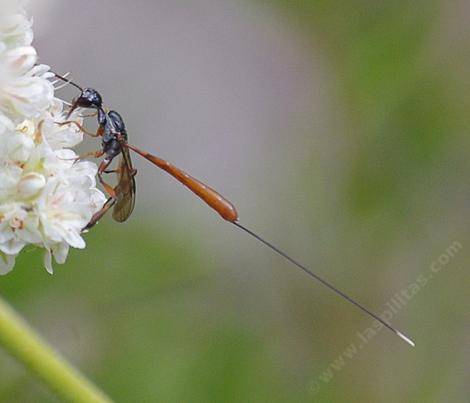
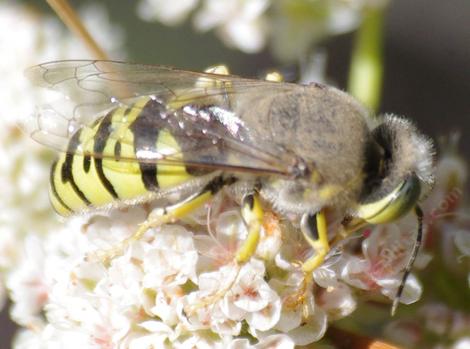
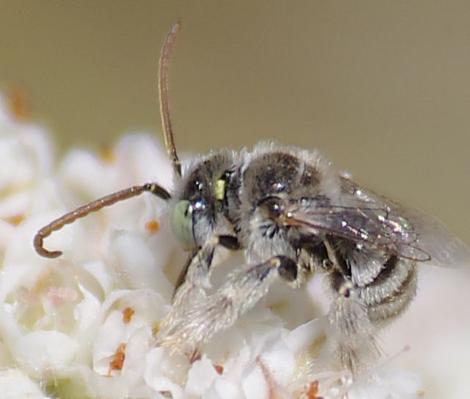
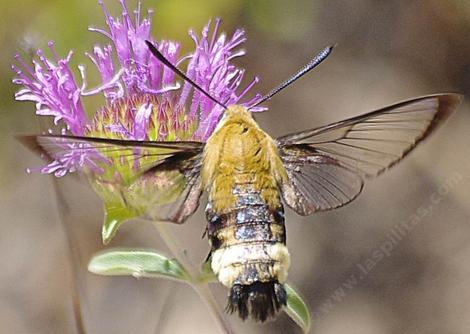
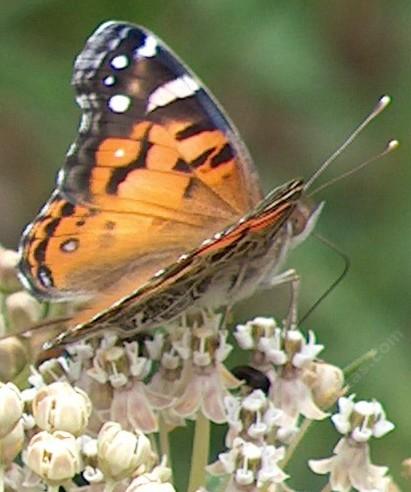
Many crops worldwide are pollinated by honeybees with the help of wild insect pollinators, with a corresponding great increase in yield. Many of these crops grow in California. Generally, the major wild insect pollinators are mostly bees, then flies.
Some examples are berries, melons, cucumbers, squash, apple, pear, almond, apricot, cherry, peach, avocado, guava, kiwi, and beans.
Many wild bees are solitary; that is, they do not form a colony in which there is division of labor, with workers, queens, etc., but some are eusocial; they nest in abandoned mice, vole, gopher dens, or under tussocks of grass (bumblebees), in tunnels in dead trees, or tiny tunnels in the ground or within hollow stems, or twigs (solitary bees).
Don't forget wild flies. In many crops flies are minor major pollinators! Flies are still very important because, if the major pollinators are absent, then flies become the major pollinators. Flies are the backup system for pollination, in many cases. The best way to conserve and attract pollinating flies is to conserve their habitat.
Create a Pollinator Habitat
To create a habitat for pollinators, growing a variety of plants, so that there is something flowering almost all year round, works best. The best habitats to attract these wild pollinators are: heterogeneous as possible, edge habitats, lots, with high density of flowers, some bare soil between plants, with no soil disturbance (this means no tilling, no shovels, no hula hoes, etc.). They need well-drained, undisturbed soil, and soil not compacted by vehicles or machinery.
To increase yields in agricultural crops via wild insect pollinators, limited inputs are best; best practices are microspray or overhead irrigation, limited use of low-toxicity herbicides, insecticides, or inorganic fertilizers. For vegetable and fruit gardens, if possible, place compost as a mulch on top of the ground, instead of tilling the compost into the soil.
Unfortunately, in order to have a food-producing garden or crop, activities such as fertilizing, weeding, harvesting, and tilling have to be done every season for some crops, and every few seasons for other crops, depending on your location in the state. Thus, the wild pollinator habitat should be located away from the field/orchard/garden proper, to protect the area from disturbance. Since many wild insect pollinators nest underground, especially bees, common gardening and farming activities will destroy or damage their nests. To reiterate, this pollinator habitat is best located on the edges of the crop or garden area, where no regular gardening/farming activities are going on, such as tilling, weeding, fertilizing, watering, harvesting, etc.
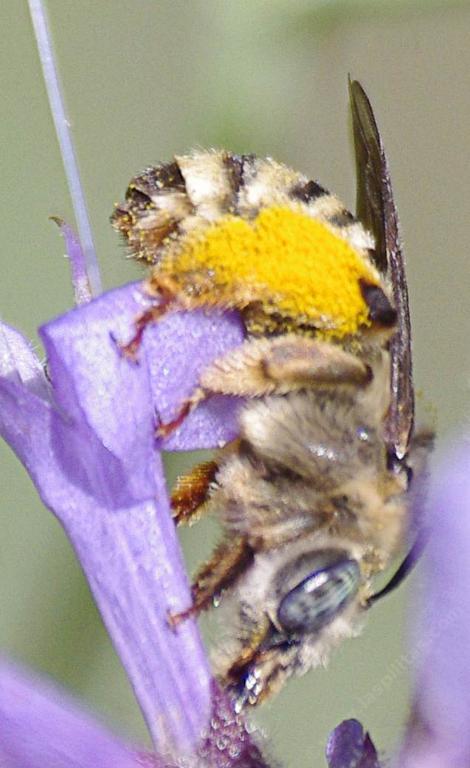
Because the range of many wild insect pollinators in California is very small, like 450 ft. to 1800 ft, compared to a honeybee which can be up to 5 miles, putting the pollinator habitat as close as possible to the garden or crop will usually increase yields.
The more variety of California native plants you grow that support wild pollinators, the more variety of wild pollinators will be present, and according to researchers, there is a positive correlation between pollinator diversity, and crop yield.
Plant List and Design for Pollinator Habitat
More pollinators have been found in linear habitats. So I have created an example of a roadside/gardenside, or cropside if you will, pollinator habitat, utilizing a variety of California native shrubs, and perennials that should produce flowers throughout the year, in most areas of California. Since there are some species that are wide-ranging, those have been listed below. Some of the plants of certain genera have different species in different parts of the state, and so those species are not listed for every microclimate.
Roadside or Field or Garden or Orchard Edges
If you set out the plants at 100% spacing, there will still be bare soil between plants, and you can use mulch on top of the ground under the drip line of each plant.
Different types of plants need different types of mulch. The planting guide will give information on which type of mulch to use, and how to best plant, water, and maintain the California native plants for the pollinator habitat. Annuals in sun need no mulch, annuals in shade will utilize the mulch of the shrub or tree shading them.Shrubs, 6' to 12' high, in a row: Adenostoma species, Ceanothus species, Arctostaphylos species, Prunus species, Heteromeles arbutifolia, Cercocarpus species, Rhamnus species
Another example in a moister area (depending on where you are) could be: Mahonia species, Cercis occidentalis, Salix species, Sambucus mexicana, Rosa species, Ribes species.Subshrubs, in a row, individually offset, in front of the shrub row: Salvia species, Eriogonum species, low Baccharis pilularis varieties, Baccharis douglasii, Lotus scoparius, Isomeris arborea (drier areas of the state).
Perennials, in a row, in front of the subshrubs: Monardella species, certain Penstemon species, Erigeron species, Hazardia squarrosa, Isocoma menziesii, Eriophyllum species, Grindelia species, Achillea millefolium, Heterotheca species, Lessingia species, Astragalus species, Nassella species, Leymus condensatus, Scrophularia californica, whew! I could go on, but you get the picture.
Another example in a moister area could be: Muhlenbergia rigens, Horkelia cuneata, Verbena lasiostachys, Potentilla glandulosa, Aster chilensis, Solidago species, Bidens laevis.
Annual Wildflower Patch should be separate from the linear hedgerows of perennials, and shrubs, and only as large as you can handle (for purposes of weeding, labor wise). A good spot is sunny, no hose nearby, and a spot you don't know what to do with. For a garden or orchard, putting the annual wildflower patches at the corners of the garden work really well.
Plant the annuals in a dense patch, 3' by 3' is a good start. The reason for the small size is the labor and time involved to weed, which will overcome you if you are not careful.
Some Examples: Dichelostemma (technically a perennial) Lupine species, Eschscholzia species, Agoseris species, Trifolium species, Lotus species, Monardella species, Gilia species, Astragalus, species Phacelia species, Chaenactis species, Hemizonia species, Stephanomeria species, Trichostema species, Heterotheca species, Lessingia, Gnaphalium, Salvia species, Lasthenia species, Layia species, and etc., etc., etc.
Examples for Limited Space or Shade Gardens
If your space is limited, these plants seem to attract the most variety of pollinators: Arctostaphylos species, Ceanothus species, Salvia species, Baccharis species, and Achillea millefolium, for the long-term plants, and annuals in the legume, (Fabaceae), mint (Lamiaceae), waterleaf (Hydrophyllaceae), poppy (Papaveraceae), phlox (Polemoniaceae), mallow (Malvaceae), buckwheat (Polygonaceae), daisy (Asteraceae) families and more!
If your garden is shady (light shade, as in, under pine trees, widely spaced) you can try shrubs like Arctostaphylos hookeri, A. edmundsii, Ribes species, Spiraea, Ceanothus thyrsiflorus repens, Rhamnus species, Heteromeles arbutifolia, Berberis species (one of the best for the deepest shade), Venegasia carpesioides, , Salvia sonomensis (with or under the Arctostaphylos), Achillea millefolium (sunniest spot you have, but naturally grows in the shade of deciduous oaks), Calystegia species, Carpenteria californica, Cornus species, Ceanothus hearstiorum, Scrophularia californica, Monardella species, Rosa gymnocarpa, Potentilla species, Solidago species, and for annuals, Collinsia species, Trifolium species, Phacelia species, and Clarkia species.
